- 1 Minute to read
- Print
- DarkLight
- PDF
How to Define Substitution Variables
- 1 Minute to read
- Print
- DarkLight
- PDF
In the example below, substitution variables are created for the Time and Scenario dimensions of the FinanceMaster model. The intention is to have a 12-month rolling forecast.
Select the Model task and the Model Administration, Substitution Variables subtask.
Select the model for which you want to define variables.
Select the dimension to which you want to apply the variable. Values are displayed based on the dimension members.
In the Variable cell, enter a name for the substitution variable.
In the Value cell, select the list box and select a dimension member or enter a value directly in the cell.
Once all substitution variables are defined, click Save.
Select the Analyze task and the Data subtask.
Select the FinanceMaster model, which is the model the substitution variables were defined for.
Manipulate the data as needed using actions.
Select the Report subtask.
Notice that member values are displayed when labels are selected. In the image below, there are currently no substitution variables used. Select a block of cells or just one cell to select a substitution variable.

Click the Design Manager action.
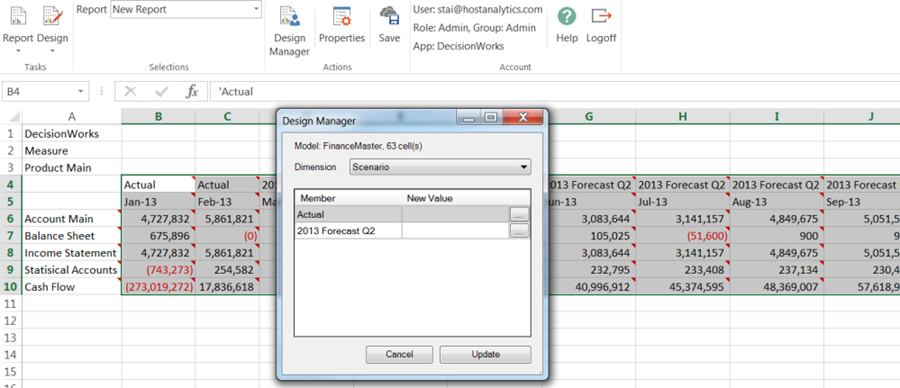
The Scenario dimension is already displayed in the Dimension list box, but you can select any dimension. Click the search button (
 ).
).Substitution variables as well as dimension members are displayed in a hierarchy as shown below.
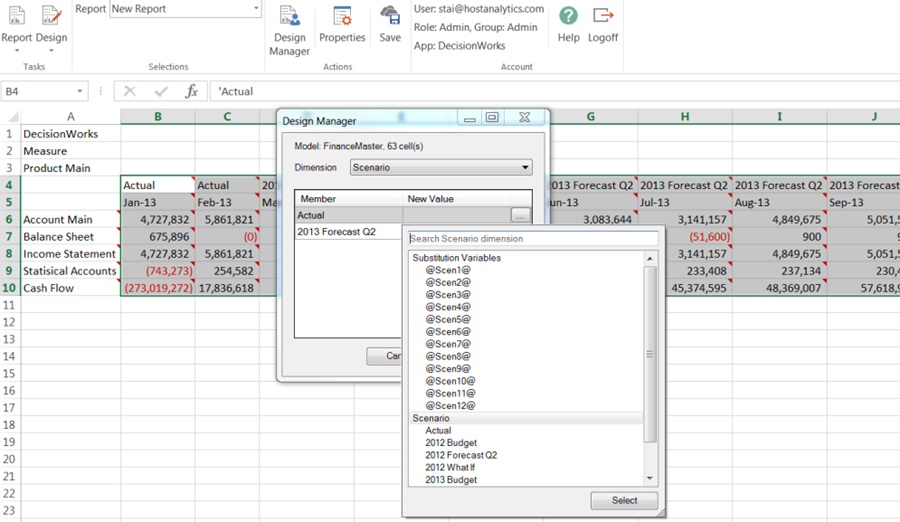
In this case, Scen1 is selected for the Actual scenario (cell B4), Scen2 is selected for the Actual scenario (cell C4), Scen3 is selected for the 2013 Forecast Q2 scenario (cell D4), and so on until all 12 periods are substituted.
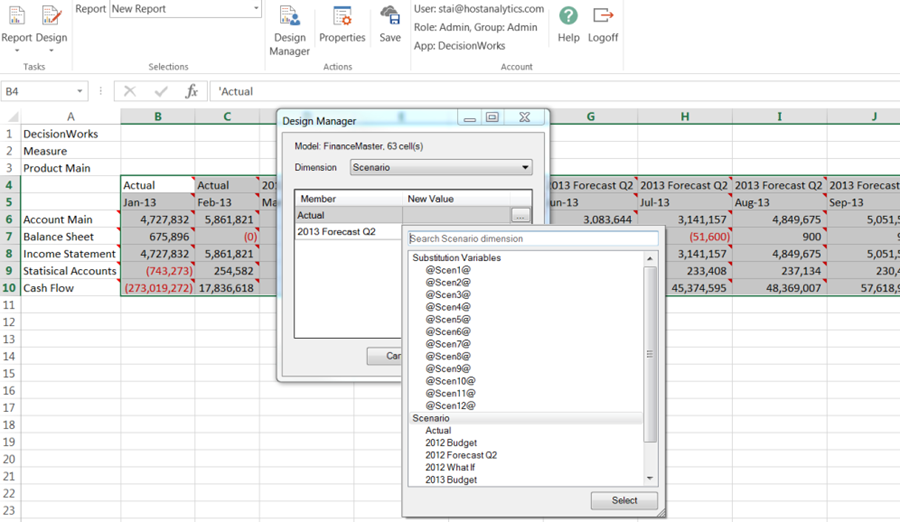
Once all scenarios are substituted, select Jan-13 (cell B5) and click Design Manager.
Select Per1 and click Update. Select Jan-13 (cell C5) and click Design Manager. Select Per2 and so on until all 12 periods are substituted.
Note:Not only should you select the label, but the data values as well to update those intersections with the substitution variable.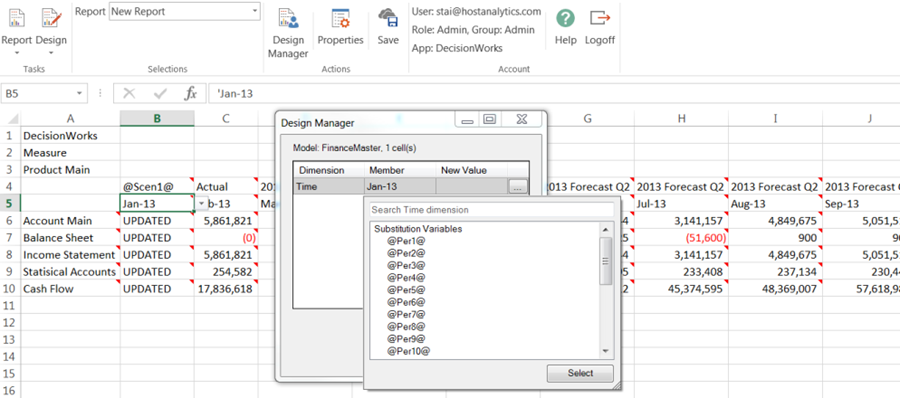
Once all periods and scenario substitution variables are applied, click Save.
Enter a report name.
Click on a dimension member label to view the substitution variable assigned.
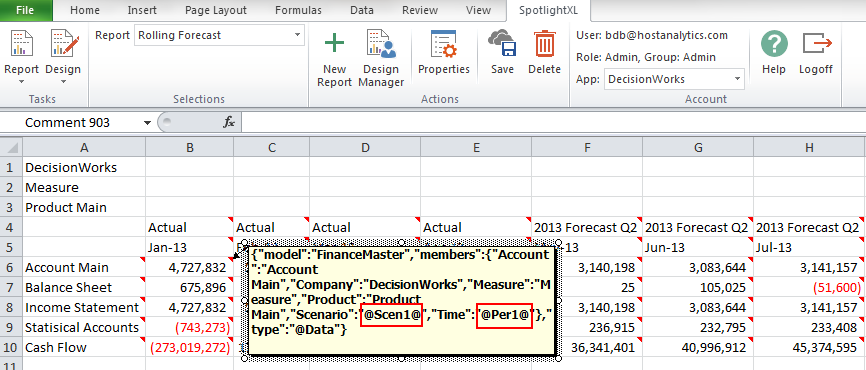
Select the Run subtask to run the report with substitution variables

When defining additional reports, you can substitute the variables defined as long as the report belongs to the same model. Or, use Substitution variables for existing reports. When in Design mode, select the column or row label and click Design Manager.

